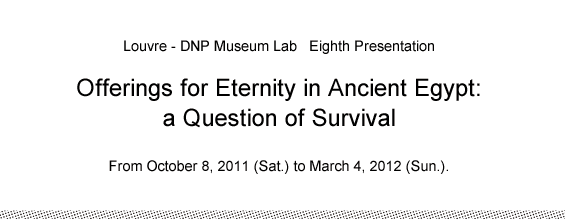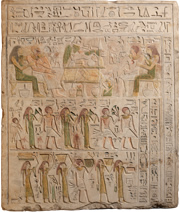|
|
 The ancient Egyptians believed that existence on earth and in the underworld was essentially the same. The deceased's main concern was therefore to have food and drink for all eternity: in the afterlife, as on Earth, it was a question of survival! 
Stela of Sakherty, chamberlain Probably Abydos Middle Kingdom, 12th Dynasty, reign of Sesostris I C. 1970–1900 BC Painted limestone H. 64 cm; W. 54 cm Musée du Louvre, Department of Egyptian Antiquities Inv. E 3113 (C 196) Purchase, Anastasi collection, 1857 © 2011 Musée du Louvre / Christian Décamps The Egyptians therefore used several different solutions at the same time: the family or funerary priest could place actual offerings before the tomb, but the power of magic was believed to be more reliable. Through images and text (whether written or spoken), the "virtual" offering was the equivalent of the real thing, with the added advantage of lasting forever. Egyptian art aimed above all at magical efficiency. Throughout the Pharaonic period (about three millennia), Egyptian artists endeavored to depict people and objects under their best aspect to ensure their perpetuity, while respecting artistic conventions such as their distinctive way of depicting the human body or of including figurative scenes and hieroglyphic inscriptions within the same composition. The objects exhibited during the 8th Louvre - DNP Museum Lab presentation create a powerful evocation of ancient Egyptian funerary beliefs. This presentation, which focuses on the stela of Sakherty—the name of the deceased—provides insight into the mysterious world of the ancient Egyptians. Original, purpose-designed multimedia displays introduce visitors to Abydos, the sacred city of Osiris (god of the dead), where the stela is thought to have come from, and invite them to participate in an offering ritual. |
||